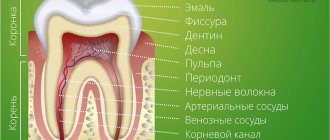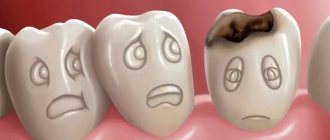September 9, 2022 Colds in children are one of the most exciting topics for parents. Every mother wants her baby to always be healthy and to avoid any illness, and she becomes scared when the thermometer shows a high temperature in the child. However, one way or another, the child’s body has to deal with various infections.
Regular acute respiratory viral infections in children are associated by parents with long absences from kindergarten and school. Moreover, regular viral diseases can lead to the development of various complications.
How often do children get sick?
Children under 5 years old experience up to 8 episodes of ARVI per year1. In kindergartens, the morbidity rate is especially high in the first and second year of attendance - 10-15% higher than at other times.
The number of visits to pediatricians with ARVI increases from September to April, and the peak incidence occurs from February to March. In the summer months, the incidence decreases by approximately 3-5 times.
Children are especially vulnerable to influenza. The reason for this is insufficiently developed immunity. The spread of the virus in children's groups (in schools, kindergartens, boarding schools) is occurring rapidly.
Immunity in children. Why do children get sick more often?
The immune system of children develops throughout childhood.
The immunity of infants is imperfect and this feature is a special mechanism that protects the body from too violent immune reactions to infections.
In the first weeks of life, the baby is protected by the antibodies that he received from his mother and then continues to receive them through breast milk. But such protection is sometimes not enough.
Moreover, while immunity is just developing, periods of maximum risk of developing infectious diseases arise; they are called critical periods:
First critical period
This is a period of vulnerability for newborns, which occurs in the first 28 days of life. During this period of time, the child’s body is protected only thanks to antibodies received from the mother through the placenta and breast milk. The risk of contracting bacterial and viral infections during this period is very high. Premature newborns are a special risk group.
Second critical period
Lasts from 4 to 6 months of life and is accompanied by a decrease in the amount of maternal antibodies.
Due to some mechanisms, which are also still poorly developed, the child’s own antibodies are produced, but they are not yet sufficient to protect the baby. Therefore, the body’s susceptibility to airborne and intestinal infections during this period is also high. Thus, in children under one year of age, all the basic mechanisms of the body’s defense against bacteria and viruses are weakened.
Third critical period
Occurs in the 2nd year of life. It is from this age that the child begins to have more and more contact with the outside world and various infections. The child's sensitivity to respiratory and intestinal infections is still high. The baby's immune defense mechanisms are not yet fully developed.
Fourth critical period
Appears at 6-7 years of age. Children of this age are also prone to infectious diseases, as some indicators of the immune system change.
Fifth critical period
Adolescence from 12-15 years, and the age may vary slightly for boys and girls. This is due to an increase in the secretion of sex hormones, which slightly weakens the immune system. Children of this age are characterized by high sensitivity to viral infections.2
"Viburkol" - what kind of drug is it?
The drug in question belongs to the class of homeopathic remedies, produced by a German company. These are rectal suppositories, which are often used for young children during the eruption of their first milk teeth. However, this remedy helps relieve similar symptoms of many other childhood diseases.
According to experts in the field of pediatrics, this form of administration, namely suppositories, is the most preferable. This is a painless option for transferring medicinal substances into the body of a small child. Unlike tablets and capsules, suppositories do not provoke a gag reflex, and the active components of the drug are absorbed through the intestines much faster. In addition, “Viburkol” is a product created on the basis of plant components, so the harmful side effects are virtually reduced to zero.
ARVI or flu
Despite the fact that influenza is part of the group of acute respiratory viral infections (acute respiratory viral diseases) and their symptoms are very similar, the manifestations of influenza are more pronounced.
If the symptoms of a cold are accompanied by a runny nose, nasal congestion, sore throat, headache, low-grade fever, cough and general malaise, then with the flu there is a sudden onset of illness, high temperature, and fever.
With influenza, the risk of developing bacterial complications, such as bronchitis, pneumonia and otitis media, is many times higher than with regular acute respiratory viral infections.
How is the virus transmitted among children?
The influenza virus is transmitted from child to child by sneezing, coughing and talking.
Among children, contact transmission of the virus is common through household items, children's toys, dishes, bedding and various surfaces. The fact is that a virus - for example, the influenza virus - can survive for 2 hours on tables, door handles, pencils, etc. After playing with shared toys or touching the table, the child then touches his face, nose and eyes with his hands.
During epidemic seasons, outbreaks of ARVI and influenza are observed in collective places, most often kindergartens, less often schools.
Symptoms of ARVI in children:
Flu Symptoms
- acute onset with a sharp rise in temperature to 39-40.5C°
- severe aches in the body and joints
- headache, eye pain
- lethargy, weakness, malaise
- decreased or lack of appetite
- nasal congestion, minor rhinitis, dry cough
- may have a sore throat
- sometimes nausea, vomiting, diarrhea.
ARVI symptoms
- acute onset with an increase in body temperature to 37.5-38.0°C.
- aches in the body and joints
- headache
- lethargy, weakness, malaise
- decreased or lack of appetite
- rare to heavy mucous discharge from the nose, nasal congestion
- cough, dry or wet
- sore throat and discomfort
With ARVI, in most sick children the temperature drops on the 2-3rd day of illness. With the flu, the temperature can last up to 5-7 days. If the temperature does not decrease during the course of the illness, this may indicate a bacterial infection.
How to give the drug to a child
Obviously, this herbal remedy really helps relieve acute symptoms, but how to give the drug to a child? Usually one candle 2-3 times a day is quite enough. In special situations, when the pain is too severe, more frequent use is allowed. In such cases, suppositories can be placed at intervals of half an hour, but the maximum duration of such intensive use of the drug is 2 hours.
It is recommended that a child under one year of age take half a candle twice a day. If a very young baby’s teeth begin to erupt, that is, in the first months of life, then in such situations experts allow the use of a quarter of a whole candle up to 4 times a day. It is better to discuss the exact dosage with your treating specialist.
On a note! How long does it take for Viburkol to work? As the active components of the drug are absorbed through the intestinal walls, they gradually reduce the temperature and pain. The sedative effect is usually observed half an hour after the introduction of the suppository, and the inflammation subsides only as a result of repeated use.
The use of the drug helps the child fall asleep peacefully
It is better to light a candle before bedtime - this way the child can get a good night’s sleep and rest. Keep in mind that when placing a suppository, there is still a risk of the drug leaking, especially if the child remains in an upright position. The product is also used for teething without fever, to relieve swelling, inflammation and pain.
Clinical manifestations of ARVI and influenza
- nasopharyngitis - nasal congestion, mucous discharge from the nasal passages, discomfort in the throat in the form of soreness, burning; Mucus may drain down the back of the throat, which can cause a wet cough (nasal congestion, mucus discharge and sore throat can cause the child to become restless, including refusing to eat)
- eustacheitis and otitis media - pain in the ears appears, with some forms of otitis there is a decrease in hearing, with otitis media a high temperature also rises
- Laryngitis is manifested by hoarseness of voice, rough cough, but there is no difficulty breathing
- pharyngitis is characterized by a red throat, namely the back wall of the pharynx and palatine arches; the mucous membrane is loose and edematous; mucus may drain down the back of the throat; with pharyngitis, a dry, obsessive cough is common
- tracheitis is a disease that can cause a strong obsessive cough
- croup syndrome (obstructive laryngotracheitis) is characterized by laryngeal stenosis; this condition is a common occurrence among preschool children with ARVI
Immune organs
After we have examined the concept of immunity and its main types, it is necessary to pay attention to the organs that provide it.
There are central and peripheral organs of the immune system.
The central ones include:
- Red bone marrow. Found in bones. Serves as a source of formation of all blood cells, including cells of the immune system.
- Thymus. It further matures some of the immune system cells coming from the red bone marrow.
Peripheral organs:
- Lymph nodes.
- Spleen.
- Accumulations of lymphoid cells in the skin, respiratory organs, and intestines.
Fever due to ARVI and influenza
Fever is a temporary increase in body temperature due to some illness. Fever is one of the symptoms of ARVI and influenza.
High temperature is the body’s protective reaction to a pathogen that has entered the body. Many viruses and bacteria stop reproducing at temperatures above 37-38°C, and the formation of antibodies is also stimulated.
There are “pink” and “white” fever.
For pink fever:
- heat production and heat transfer mechanisms are adjusted correctly
- baby's skin is pink and hot to the touch
For white fever:
- centralization of blood circulation (blood circulation is aimed at preserving the functioning of the heart, lungs, brain) and disruption of blood microcirculation
- limbs are cold, pale
- bluish leather with marble pattern
- "goose pimples"
- chills
Such a course of fever may be unfavorable.3
Diagnosis of colds in children
The most effective diagnosis of all viral diseases among children is timely contact with a pediatrician. The doctor has information about the epidemiological situation in the region, about outbreaks of the circulating virus in kindergartens and schools. It is very important to collect a detailed medical history of the child and obtain information about possible contacts with patients. All of the above factors will help determine the suspected pathogen.
Among children, virological or bacteriological testing is not recommended, since this does not affect treatment tactics. Most often, children quickly recover on their own, which does not require the use of special laboratory diagnostic methods. Exceptions include a rapid influenza test in children with a high fever and a rapid streptococcal test for suspected acute streptococcal tonsillitis.4
A general blood test, a general urinalysis and other laboratory tests are prescribed strictly by a doctor!
Treatment of colds in children
The main method of treating ARVI and influenza in children is symptomatic therapy, that is, therapy that reduces certain symptoms such as high fever, cough, runny nose, sore throat:5
- taking antipyretics
- vasoconstrictor nasal drops
- rinsing the nose with saline solution
- gargling with antiseptic solutions
- local therapy in the form of sprays and tablets for sore throat (different formulations for different ages)
- physical methods to reduce temperature
In case of high fever, it is necessary to undress the child, remove excess blankets, and clothing should not make breathing difficult. It is also necessary to provide access to fresh air whenever possible. If necessary, wiping with water at room temperature is carried out, since wiping with water improves heat transfer. It is strongly not recommended to wipe a child with alcohol, as alcohol may be absorbed (especially in young children) and poison the child’s body.
Antiviral therapy is applicable only for influenza, but in children antiviral drugs are prescribed strictly by a pediatrician!
Antibacterial therapy is prescribed strictly according to indications. Antibiotics are justified only for severe bacterial complications, including ARVI and influenza. Antibiotics do not work against the virus!
General therapeutic measures:
- The child’s nutrition should be complete and rich in vitamins
- the child should drink enough liquid (water, tea with lemon, decoctions of rose hips, raspberries, black currants, strawberries, cranberries, lingonberries), since drinking plenty of fluids prevents dehydration and reduces intoxication at high temperatures
- bed rest
- ventilation of premises
- wet cleaning of premises
An increase in body temperature within 38-39°C does not require the use of antipyretic drugs. In this case, you can limit yourself to physical cooling methods. But age up to 2 months, severe diseases of the respiratory system, circulatory system, central nervous system, history of febrile convulsions are indications for the use of antipyretics, even if the temperature rises to 38°C.
In any case, the mother should first assess the child’s reaction to the increase in temperature by analyzing his behavior: is there lethargy, does the child refuse water and drink, what color is his skin and how does it feel to the touch. If the child is active, the skin is pink, and the limbs are warm, then you can limit yourself to physical methods of reducing the temperature. If white fever appears, then antipyretic medications should be given to the child immediately.
Despite a number of effective antipyretic drugs, paracetamol and ibuprofen remain the best drugs for children.
List of used literature
1. Kramarev S.A., Palatnaya L.A., Shamugiya B.K. Alternative methods of treatment and prevention of influenza and ARVI in children // Methodological recommendations of the Ministry of Health, 2006.
2. Yaroshchuk L.B. Possibilities of antihomotoxic therapy in the prevention and treatment of acute respiratory viral infections and influenza // Family medicine. - 2004. - No. 4. - P. 28–32.
3. Klimenko L.V. The use of antihomotoxic drugs to correct immuno-energy deficiency in the treatment of children with frequent and long-term acute respiratory viral infections // Biological therapy. - 2009. - No. 1. - P. 46–48.
4. Wemmer U. Recurrent upper respiratory tract infections in childhood // Biological therapy. - 2001. - No. 1. - P. 37–40.
5. Pharmaceutical care. Course of lectures // Edited by prof. Zupantsa I.A. - Kh.: Farmitek, 2006. - P. 105.
6. Instructions for medical treatment of VIBURCOL.
7. Kovtun O.V. First aid kit for newborns and infants // Biological therapy. - 2010. - No. 2. - P. 27.
8. Gottwald R., Weiser M. Antihomotoxic therapy of anxiety states with or without fever in children with Viburcol // Biological therapy. - 2000. - No. 4. - P.12–16.
9. Müller-Krampe B., Gottwald R., Weiser M. Comparison of the effectiveness and tolerability of Viburcol and paracetamol in the symptomatic treatment of acute febrile conditions in children // Biological Therapy. - 2002. - No. 4. - P. 3–9.
What should not be done in case of acute respiratory viral infections and influenza in a child?
- 1. Since antipyretics are prescribed according to the child’s age, as a rule, the dosage is adjusted according to the child’s weight. Long-term regular use (2-4 times a day) of antipyretics should be avoided due to the danger of side effects and possible difficulty in diagnosing bacterial complications (otitis media, pneumonia, etc.). A repeat dose should be given only when the temperature rises again. If the temperature does not decrease within several hours, you must call an ambulance.
- 2. A child with a fever should not be wrapped. If you dress your child warmly, you can disrupt the process of heat formation and heat transfer, which helps maintain the desired body temperature. Wrapping up can lead to overheating and loss of consciousness.
- 3. You cannot close the windows in the room. A sick child needs fresh air. Frequent ventilation also makes breathing easier.
- 4. You should not take antibiotics without a reason. Antibiotics do not act on viruses and do not prevent bacterial complications.
- 5. You should not use cough medications yourself. Different medications are aimed at treating specific cough problems. Not everyone is prescribed antitussives or mucolytics. Moreover, most often such drugs are not needed in treatment. Everything is individual and the use of such medications should be agreed with the pediatrician.
- 6. You cannot give up walking for several weeks. Short walks will only be beneficial. The child needs fresh air and movement. Of course, walks are justified only after the fever has decreased and the condition has normalized, if the child is active.
- 7. It is not entirely justified to refuse bath procedures during an acute respiratory viral infection for several days or weeks. On the contrary, a child can swim. Exceptions are, of course, high fever and otitis media.
- 8. In relation to the child, any methods of self-medication should be excluded.
All therapeutic measures are carried out only as prescribed and under the supervision of a doctor.
Viburkol
Viburkol is a homeopathic medicine for the treatment of colds. Its recipe formula includes exclusively natural ingredients. It is packaged in the form of suppositories, which makes it convenient for use in pediatric practice (for example, for nausea, a child’s refusal to take a pill). All components of the drug have been used in medicine for the treatment of various diseases since ancient times. Chamomile is useful for inflammation of the respiratory and digestive tract, teething, and nervous overexcitation. Belladonna is a means of adjuvant therapy in the treatment of acute tonsillitis, relief of inflammation of the respiratory and digestive tract. Bittersweet nightshade is used to reduce fever. Great plantain is a natural analgesic and anti-inflammatory agent. Meadow lumbago helps with inflammation of the upper respiratory tract, somnological disorders and nervous system disorders. Calcium carbonicum, obtained from oyster shells, is effective for diseases of the skin and mucous membranes, as well as for calcium metabolism disorders. Thanks to such a balanced and multicomponent composition, the drug has a combined effect: anti-inflammatory, analgesic, detoxifying, sedative and antispasmodic. Viburcol is indicated for use in pediatric practice for acute respiratory infections in patients older than 6 months. It should be noted that when taking the drug there is no sharp decrease in temperature, which allows the immune system to actively synthesize protective proteins and remove toxins from the body.
As a result, the positive potential of inflammatory reactions is activated, which return to the biological framework and help the body get rid of the source of infection. Due to the presence of sedative activity in the drug, it is useful in cases where the infection is accompanied by nervous excitement, anxiety, and problems falling asleep. The effectiveness of Viburkol has been confirmed in several multicenter randomized clinical trials, the largest of which with the highest level of evidence was conducted in Germany. It was found that the drug is not inferior in effectiveness to paracetamol, but is much safer and much less likely to cause unwanted side effects. Viburcol is an optimal drug for use in the complex treatment of acute respiratory infections in children, as well as as a means of relieving discomfort during teething. Viburkol suppositories are intended for insertion into the anus. Of the side effects, only rare allergic reactions are possible. The only contraindication to the use of the drug is hypersensitivity to one or more components of the drug. This drug combines well with other drugs that are used in classical therapeutic algorithms for the treatment of acute respiratory infections.










